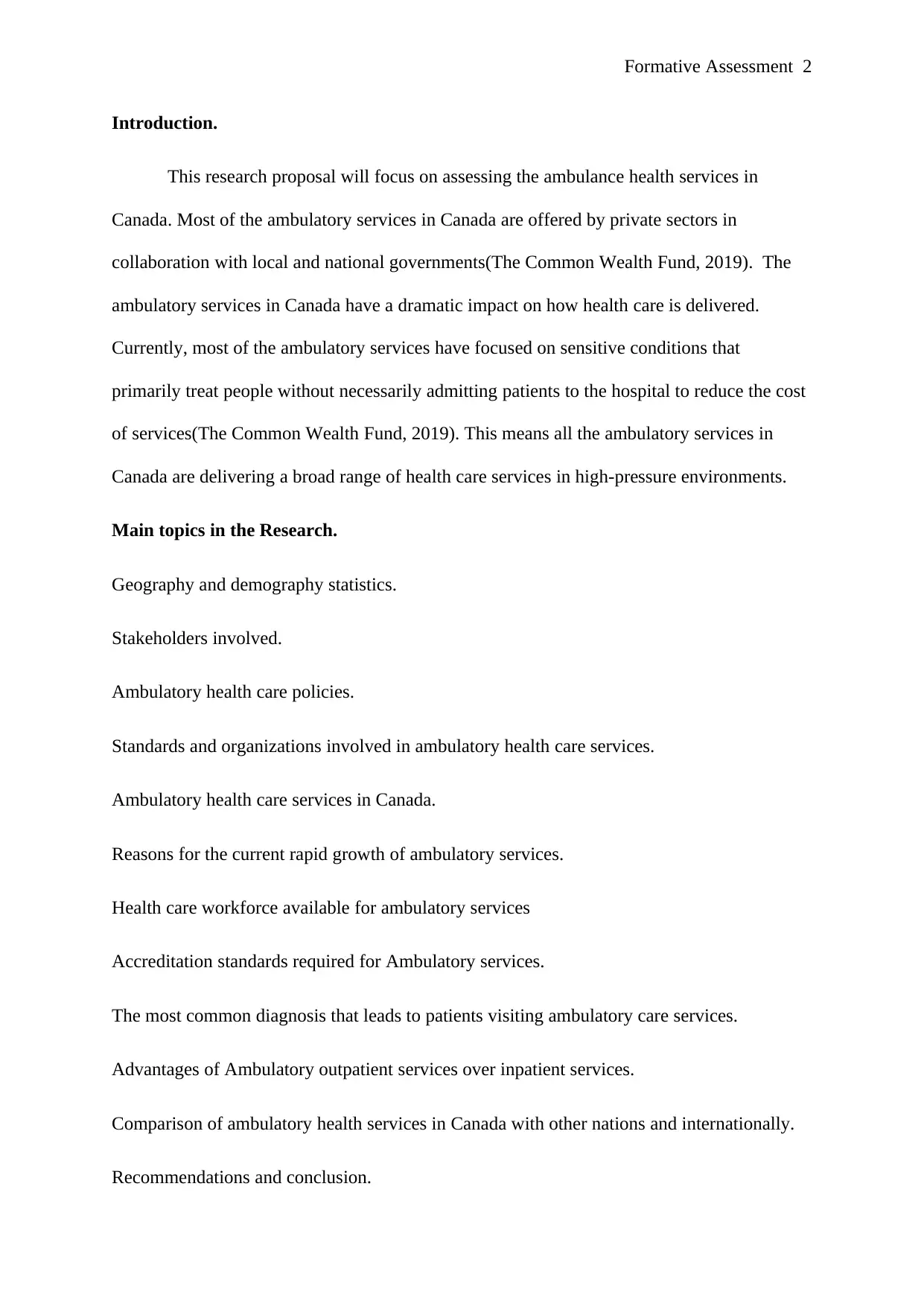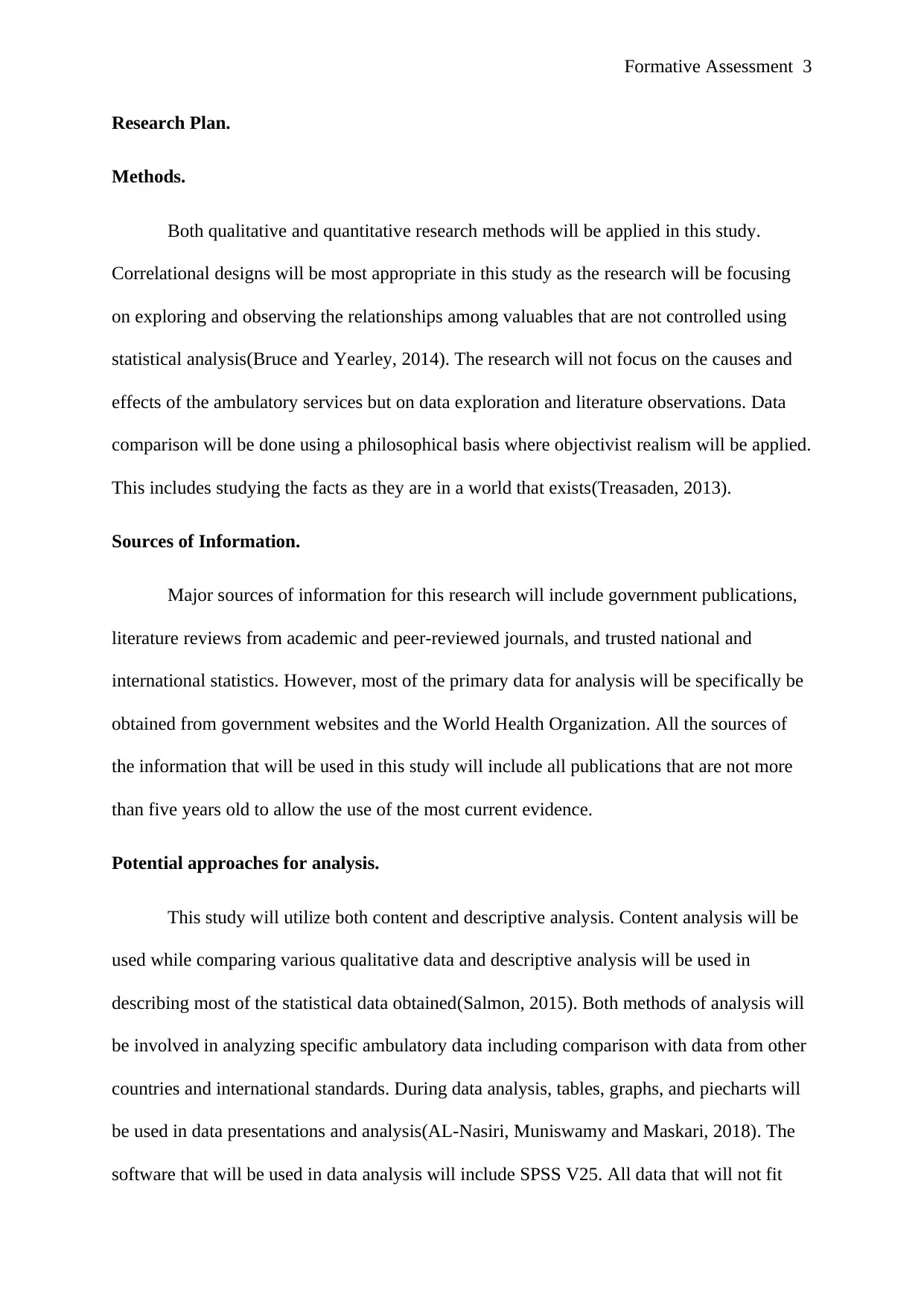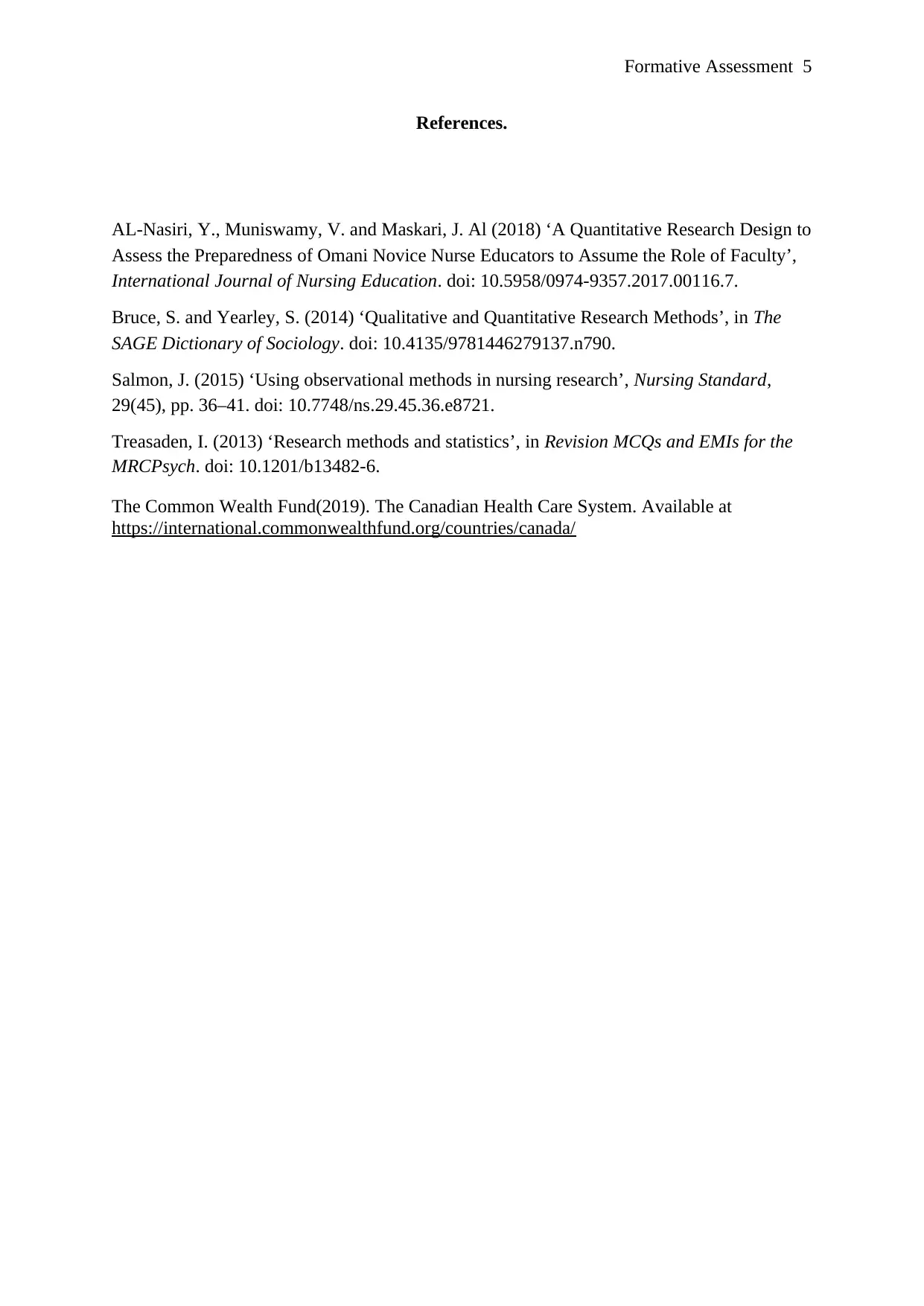Research Proposal: Assessing Ambulatory Care Services in Canada
VerifiedAdded on 2022/10/01
|5
|741
|20
Report
AI Summary
This research proposal focuses on assessing ambulatory health services in Canada, primarily delivered by the private sector in collaboration with governments. The study will explore various aspects, including geography, stakeholders, policies, standards, and workforce. It will also analyze the growth of ambulatory services, accreditation, common diagnoses, advantages over inpatient services, and comparisons with other nations. The research will utilize both qualitative and quantitative methods, employing correlational designs and content/descriptive analysis. Data will be sourced from government publications, academic journals, and international statistics, with SPSS V25 used for analysis. The study aims to provide recommendations and conclusions based on the findings, utilizing tables, graphs, and pie charts for data presentation. The research will use a philosophical basis where objectivist realism will be applied.
1 out of 5










![[object Object]](/_next/static/media/star-bottom.7253800d.svg)